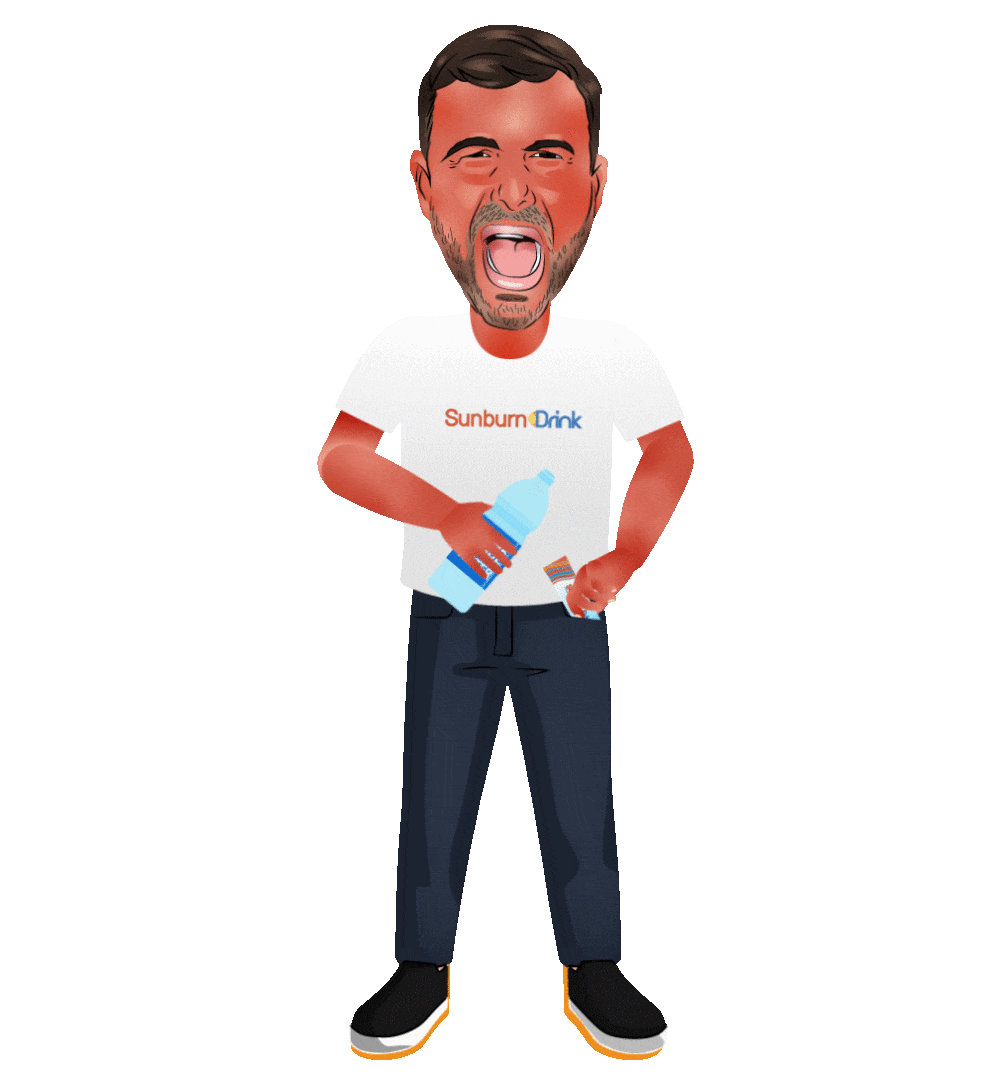Sunburn can be an unpleasant experience, and the itching that often follows can feel like torture.
But fear not, there are effective ways to soothe that fiery itch and make your recovery more comfortable.
In this guide, we’ll explore the best remedies to help you control the itchiness from sunburn.
1. Use a Cool Compress
When it comes to soothing itchiness from sunburn, one of the first steps you should take is to cool down your skin. This helps reduce inflammation, which is the root cause of the itching sensation.
It’s important to note that itching typically starts between one and three days after the burn, and it can persist for up to 48 hours.
Treating it early can go a long way in minimizing the discomfort.
To create a cool compress, here’s what you can do: Place a few ice cubes in a plastic bag, wrap it in a soft cloth, and gently apply it to the sunburned area.
However, be cautious and avoid placing ice directly on your skin.
Excessive cold can freeze the water in your skin, forming small crystals that can harm nearby skin cells, causing more pain and damage.
2. Take a Cool Shower or Bath
Cool showers or baths are another effective way to bring relief to sunburned skin.
The cool water helps lower your skin’s temperature and provides immediate relief from the burning sensation. However, don’t linger in the water for too long, as it can strip your skin of its natural oils, making it dry and potentially worsening the itch.
While in the shower, avoid using harsh, oil-stripping soaps, as these can further irritate your skin.
Instead, opt for shower products that contain soothing oatmeal, which can help alleviate itching.
For an even more soothing experience, consider taking a cool or lukewarm bath with colloidal oatmeal, known for its moisturizing and anti-inflammatory properties.
3. Use Moisturizer
Moisturizing your sunburned skin is a critical step in finding relief from itchiness. Dry skin tends to exacerbate itching, so it’s essential to keep it well-hydrated.
The ideal time to apply moisturizer is right after showering or bathing when your skin is still damp and your pores are open. This allows the moisturizer to lock in moisture effectively.
Look for gentle, fragrance-free moisturizers like Cetaphil or CeraVe, which are excellent choices for sunburn treatment.
The American Academy of Dermatology also suggests soy-based moisturizers, which are rich in antioxidants that combat cellular damage from UV rays and help your skin barrier recover more quickly.
It’s crucial to avoid numbing products containing ingredients like lidocaine or benzocaine (e.g., Orajel) as they can irritate your skin and make pain and itching worse.
4. Smooth on Some Aloe Vera
Aloe vera is a powerful ally in your battle against sunburn itch. This natural gel is not only an excellent moisturizer but also possesses anti-inflammatory properties.
Additionally, aloe vera contains magnesium lactate, which helps prevent the release of histamines that contribute to itchy skin.
Furthermore, aloe vera has been shown to aid in sunburn treatment by soothing hot skin, stimulating collagen production, and providing essential vitamins that promote healing.
If you have access to an aloe plant, you can squeeze the gel directly from the leaves and apply it to your sunburn. However, if fresh aloe isn’t available, look for a high-quality aloe vera gel that is as close to 100% pure as possible.
5. Apply Steroid Cream
When standard moisturizers aren’t providing enough relief for your sunburn symptoms, you may consider using an over-the-counter steroid cream containing 1 percent cortisone.
These creams work by reducing inflammation symptoms such as itching, redness, and swelling. They do this by blocking the chemicals responsible for triggering your immune system’s inflammatory response.
It’s important to follow expert advice in this case.
Experts recommend using cortisone cream for a week or less without a doctor’s consultation. Pregnant women and children under 10 should avoid it altogether.
6. Take Anti-Inflammatory Medications
Another approach to reducing the inflammatory symptoms of sunburn, including pain and itching, is to take non-steroidal anti-inflammatory drugs (NSAIDs).
Common NSAID medications like ibuprofen (Advil), naproxen (Aleve), and aspirin can provide pain relief and have been shown to reduce the inflammation responsible for itching in sunburned skin.
To further alleviate your symptoms, you can also turn to antihistamines, which block the release of chemicals that contribute to your immune system’s inflammatory response.
Over-the-counter allergy medications such as cetirizine (brand name Zyrtec) or loratadine (brand name Claritin) may offer relief without causing drowsiness.
7. Protect Sunburned Skin from the Sun
While healing from painful, itchy sunburn, one of the most critical steps you can take is to avoid further sun exposure.
This is especially important during the peak sun hours between 10 a.m. and 4 p.m. If you do venture outside, opt for clothing that covers your skin and is made of tightly woven fabric.
Fabrics like unbleached cotton or materials that reflect light, such as polyester or satin, can provide effective protection against harmful UV rays.
(You can also try Sunburn Drink which can help you with sunburn recovery. Thanks to skin-friendly vitamins and antioxidants, it is apart from anything else on the market.
Unlike topical products that merely address the surface, Sunburn Drink tackles the issue internally, delivering vital micronutrients to aid in the healing process and combat the effects of UV damage.)
Remember, while these remedies can help alleviate sunburn itch at home if severe itching persists for more than two days and disrupts your daily life, it’s advisable to consult a healthcare professional, as it may indicate a more serious condition, such as sun poisoning.
Protect your skin, stay safe in the sun, and recover comfortably from sunburn.
And What Not to Do in Case of Experiencing Itchiness from Sunburn
When grappling with the infamous hell’s itch or itchiness from sunburn, certain actions can exacerbate the discomfort and potentially harm your skin. Here’s what you should steer clear of:
Topical Pain Relief or Numbing Creams:
It might be tempting to reach for creams containing pain relievers like benzocaine, but research suggests that these gels don’t effectively ease the itching caused by sunburn. They may not provide the relief you’re looking for.
Scratching:
Although scratching provides momentary relief, it’s a fleeting sensation. When dealing with a sunburn, scratching can be detrimental. It can harm the delicate skin, intensify the pain, and prolong the healing process. So, resist the urge to scratch.
Popping Blisters:
In severe cases of sunburn, blisters may appear. While it might be tempting to pop them, doing so will likely intensify the pain and increase the risk of infection. Popping blisters can also lead to more scarring and skin damage. It’s best to leave them alone and let your body heal naturally.
Greasy Lotions:
Avoid moisturizers that contain greasy ingredients like mineral oil, butter, plant oils, or petrolatum. These substances can trap heat in the skin, making both the pain and itching more pronounced. Opt for light, oil-free moisturizers or soothing aloe vera to combat dryness and peeling.
Direct Application of Ice:
Placing ice directly on your skin is not advisable. Ice is too harsh for your skin and can hinder the healing process. In some cases, it may even lead to frostbite. Instead, opt for cool, damp towels or ice packs specifically designed for skin use.
Extended Baths or Showers:
While a soothing bath or shower might seem like a good idea, prolonged exposure to water can strip your skin of its moisture, making the itching worse. It’s best to keep your bathing or showering sessions short to avoid exacerbating the discomfort.
By steering clear of these actions, you can help minimize the agony of hell’s itch and support your skin’s natural healing process.


